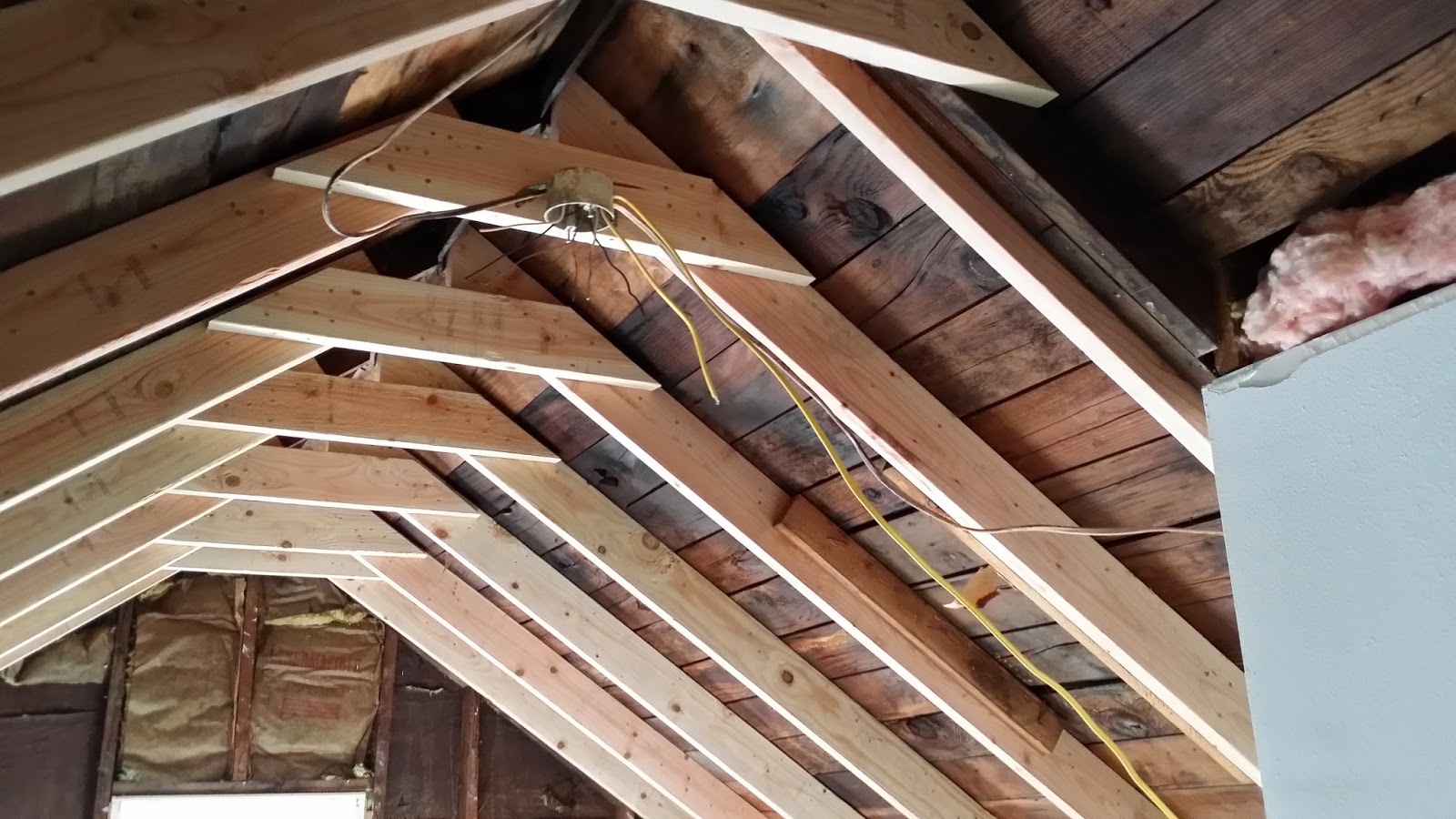

This is a very common arrangement and could be thought of as the classic timber framed roof type. In practice, in order to reduce the size of the rafters, purlins (timbers running along the length of the roof) were added to support the rafters at mid span and these were in turn supported by larger principal rafters joined by collars at intervals of usually about 2-3 metres (see Fig. These joints can deteriorate after hundreds of years of service and they are often found supplemented by blacksmith made iron cramps fitted to the tie beam and wall plate by large iron staples. Instead the method normally used was to provide large wall plates which act as horizontal beams holding the bottoms of the rafters in place and the wall plates are then themselves held together by tie beams at intervals within the building which are joined to the plate with a special tension resisting dovetail joint (see Fig. In traditional timber framed buildings the living space nearly always extended above eaves level so the approach of Fig. This can require very large rafters sometimes up to 225 mm in depth. However, if the rafters are large enough this spread can be reduced to an amount that will not cause cracking or noticeable spread of the walls. With this arrangement the rafters are tied together at collar level but tend to spread below this level (see Fig. This allows the use of some of the space within the roof as living space giving a room shape with more character and effectively reducing the height of the roof and thus the ‘bulk’ of the building. 5) where regular timber members (called collars) are provided further up the rafters than at eaves level.

As long as the beam is stiff enough and is adequately supported at its ends it effectively holds the rafters up in the middle and prevents them spreading outwards at their lower ends.Ī further variation on this is the A frame roof (see Fig. However, in some instances there is a requirement to use the loft void as living space and produce a vaulted roof structure and in this case the rafters can be supported at the apex by a ridge beam usually in steel, solid timber or laminated timber spanning between cross walls or posts (see Fig. It also leaves a void (the loft) which can be used for storage or the placing of water tanks etc.Īlternatively on buildings later than 1970 the rafters, ceiling joists and internal bracing can be fabricated off site as what are called trussed rafters (Fig. This ties them together and prevents any outward movement.

N modern cut timber roofs (pre 1970) constructed on site this force is normally resisted by joining the bottom of each pair of rafters (see Fig. Because in this arrangement the rafters lean against each other, they exert an outward force at their feet (eaves level) and will tend to push apart the walls they are built off. When a building has a duo pitched roof, pairs of rafters are in effect propped against each other and traditionally were often tenoned and pegged together at the ridge or apex (Fig. These coverings are supported by timber rafters, regularly spaced timber members running up and down the roof, which are then in turn themselves supported by a variety of means. Traditional timber framed buildings in Suffolk invariably have pitched roof structures, originally covered either with thatch, clay tiles, or later with slates imported from other parts of the country.
#Roof rafter ties how to
Roof Spread and How To Resist It by John Davis


 0 kommentar(er)
0 kommentar(er)
